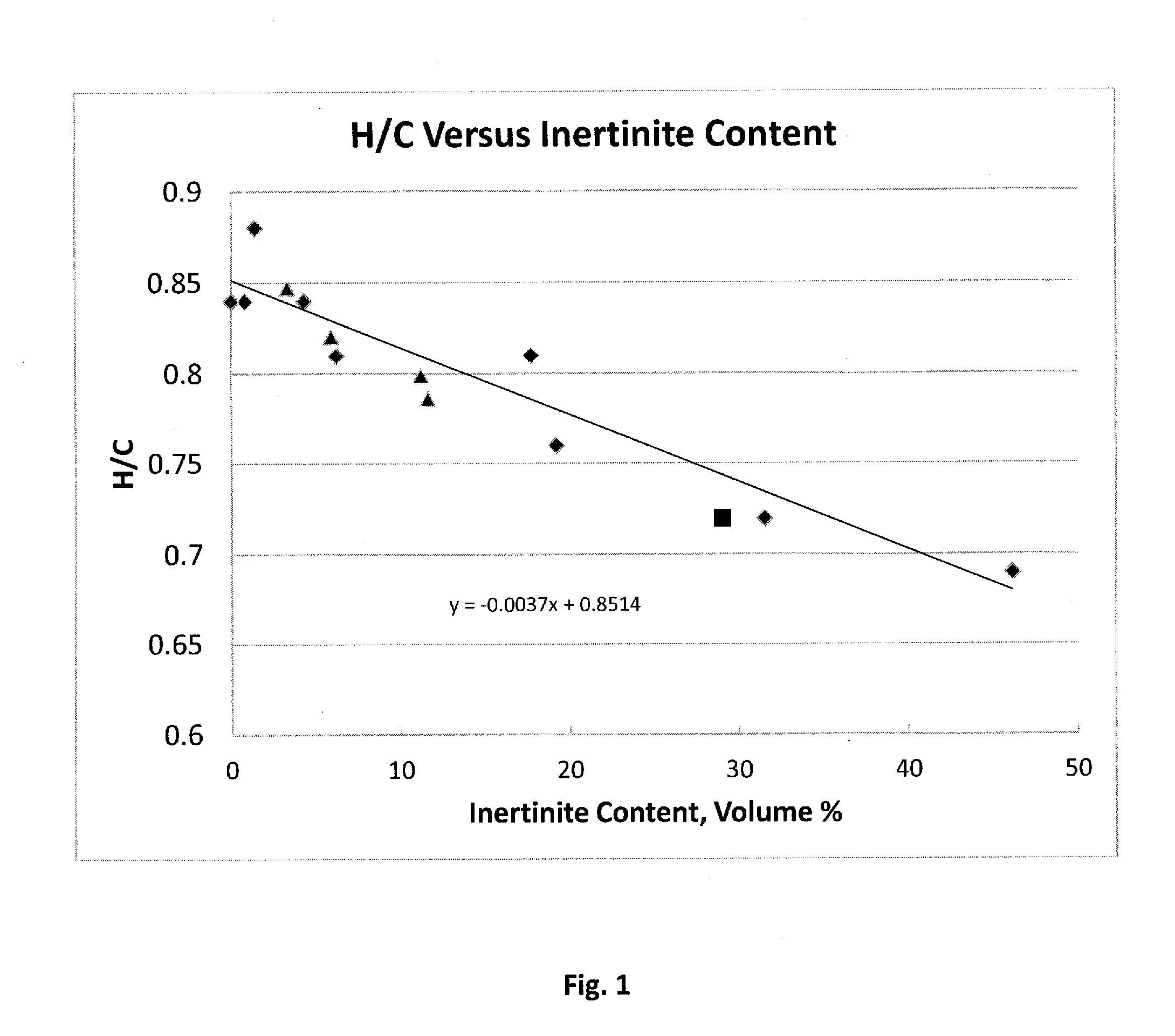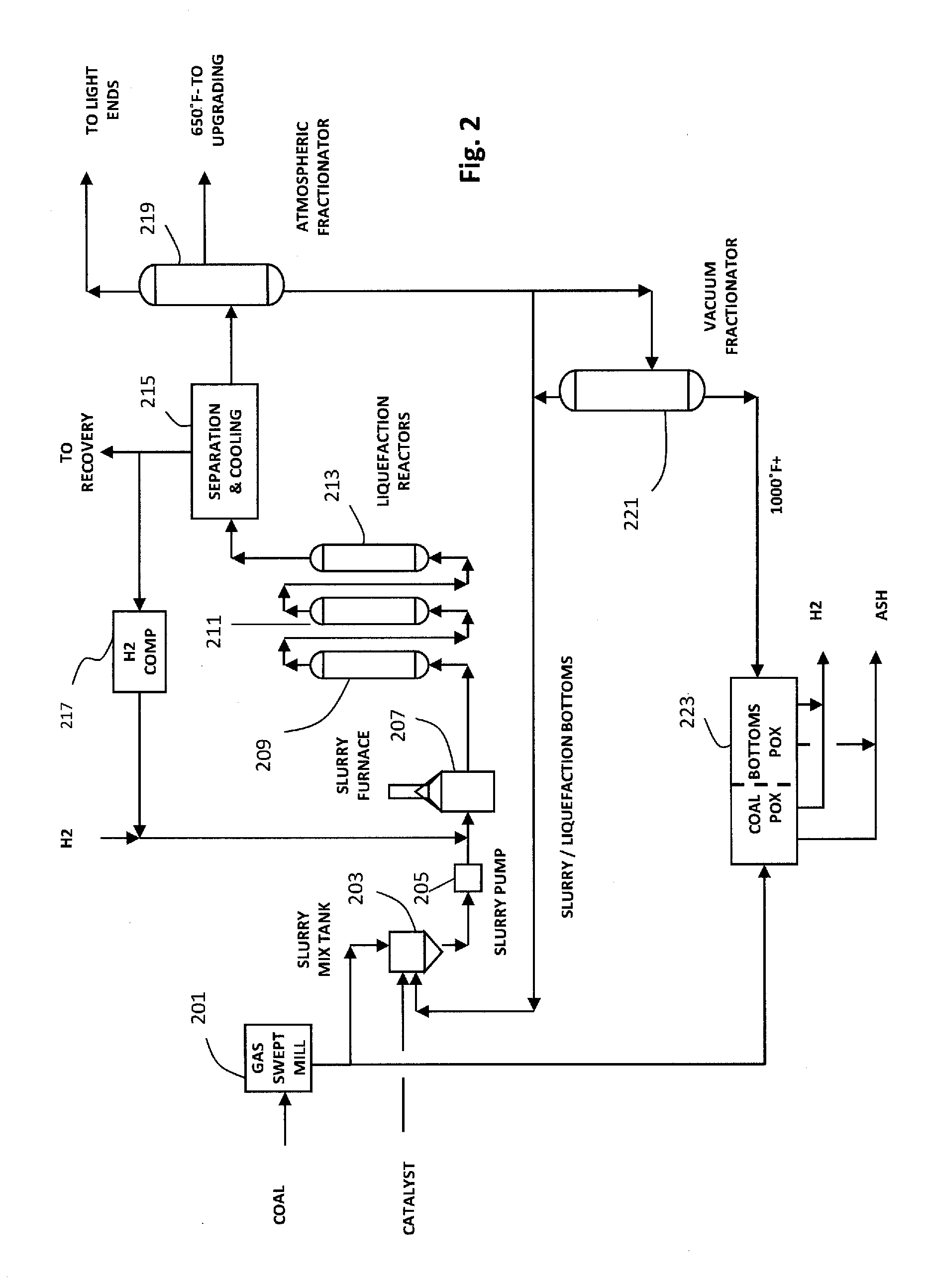Direct coal liquefaction process
a technology of liquefaction process and coal, which is applied in the petroleum industry, liquid hydrocarbon mixture production, etc., can solve the problems of large-scale liquefaction of coal, low thermal efficiency of indirect coal-to-liquid conversion methods, and high cosub>2 /sub>emission, so as to reduce energy consumption, reduce the rate of coal liquefaction, and increase the effect of recycling
- Summary
- Abstract
- Description
- Claims
- Application Information
AI Technical Summary
Benefits of technology
Problems solved by technology
Method used
Image
Examples
example
[0040]The process of the invention was run in the same 0.1 t / d pilot plant used in the runs described by Wasaka. Modifications were made to the pilot plant to the slurry mix tank, pumps, slurry reactors, microcatalyst (moly) addition, and 600 to 700° F.+ recycle. Compared to Wasaka's pilot plant operations, slurry feed rate was increased to 10 to 12 kg / hour and gas rate was reduced by a factor of 2 to 4. During the pilot plant operation, the reactors did not experience solids buildup or reactor deposits. The coal used in this example is shown as the square symbol in the chart of FIG. 1 and is therefore consistent with overall trend of H / C versus inertinite content.
[0041]Oil yield at a 1.5 / 1 ratio of non-donor 650° F.+(343° C.) recycle stream to coal was 44.6 wt % (MAF basis) When the 650° F.+ stream rate was increased to 3 / 1 at a low H2 feed rate of 0.73 Nm3 / kg of slurry, the C5+ / 371° C. (C5 / 650° F.) yield increased to 66.4 wt %. This is substantially higher than observed with an ir...
PUM
 Login to View More
Login to View More Abstract
Description
Claims
Application Information
 Login to View More
Login to View More - R&D
- Intellectual Property
- Life Sciences
- Materials
- Tech Scout
- Unparalleled Data Quality
- Higher Quality Content
- 60% Fewer Hallucinations
Browse by: Latest US Patents, China's latest patents, Technical Efficacy Thesaurus, Application Domain, Technology Topic, Popular Technical Reports.
© 2025 PatSnap. All rights reserved.Legal|Privacy policy|Modern Slavery Act Transparency Statement|Sitemap|About US| Contact US: help@patsnap.com


